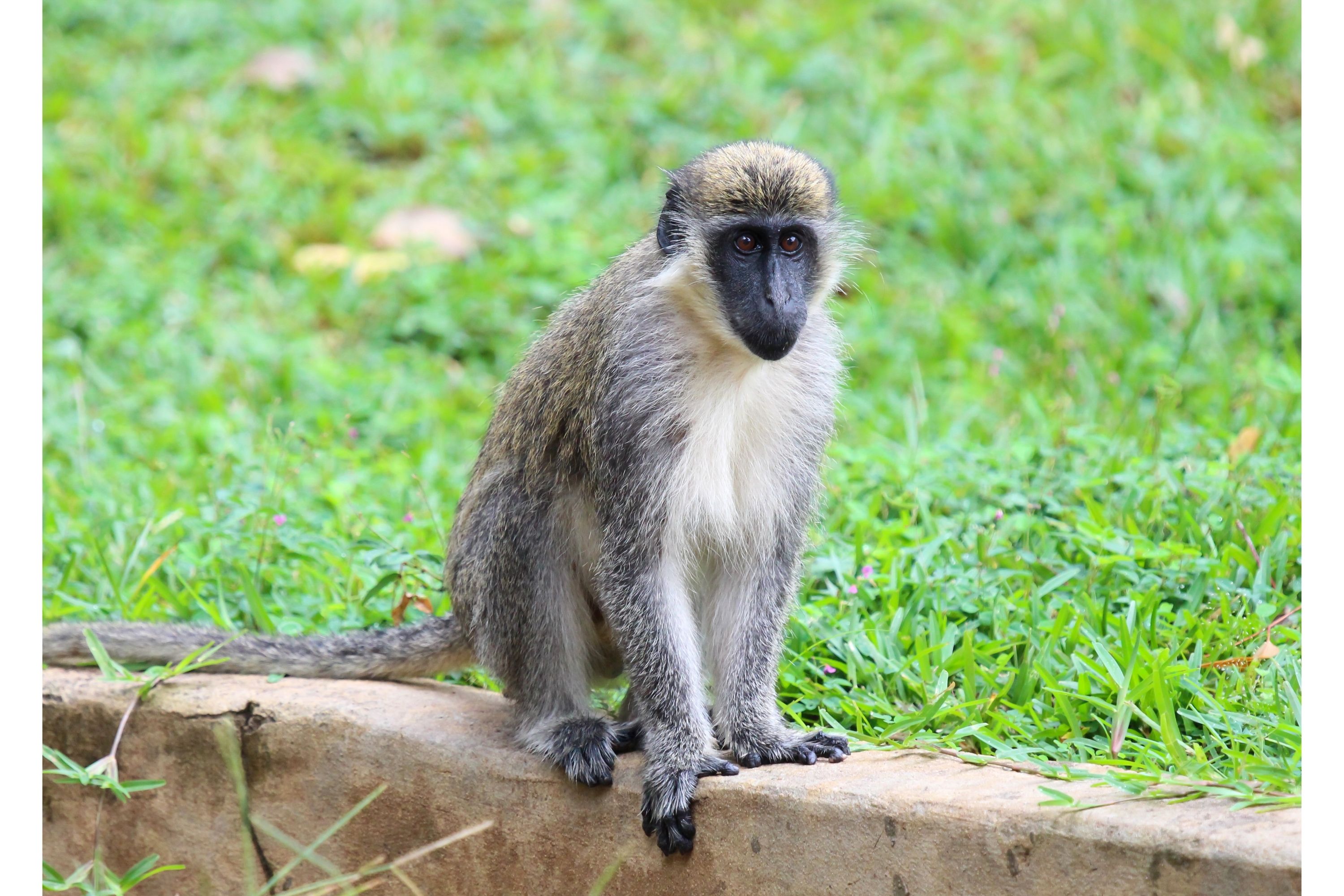Vervet monkey
(Chlorocebus pygerythrus)

Description
The vervet monkey (Chlorocebus pygerythrus), or simply vervet, is an Old World monkey of the family Cercopithecidae native to Africa. The term "vervet" is also used to refer to all the members of the genus Chlorocebus. The five distinct subspecies can be found mostly throughout Southern Africa, as well as some of the eastern countries. Vervets were introduced to Florida, St. Kitts and Nevis, Barbados, and Cape Verde. These mostly herbivorous monkeys have black faces and grey body hair color, ranging in body length from about 40 cm (16 in) for females, to about 50 cm (20 in) for males. In addition to behavioral research on natural populations, vervet monkeys serve as a nonhuman primate model for understanding genetic and social behaviors of humans. They have been noted for having human-like characteristics, such as hypertension, anxiety, and social and dependent alcohol use.Vervets live in social groups ranging from 10 to 70 individuals, with males moving to other groups at the time of sexual maturity. Studies done on vervet monkeys involve their communication and alarm calls, specifically in regard to kin and group recognition, and particular predator sightings. Females remain in their groups throughout life. Separate dominance hierarchies are found for each sex. Male hierarchies are determined by age, tenure in the group, fighting abilities, and allies, while female hierarchies are dependent on maternal social status. A large proportion of interactions occurs between individuals that are similarly ranked and closely related. Between unrelated individuals, female competition exists for grooming members of high-ranking families, presumably to gain more access to resources. These observations suggest individual recognition is possible and enables discrimination of genetic relatedness and social status. Interactions between different groups are variable, ranging from highly aggressive to friendly. Furthermore, individuals seem to be able to recognise cross-group vocalisations, and identify from and to which monkey each call is intended, even if the call is made by a subadult male, which is likely to transfer groups. This suggests the members within a group are actively monitoring the activity of other groups, including the movement of individuals within a group.
Taxonomic tree:







